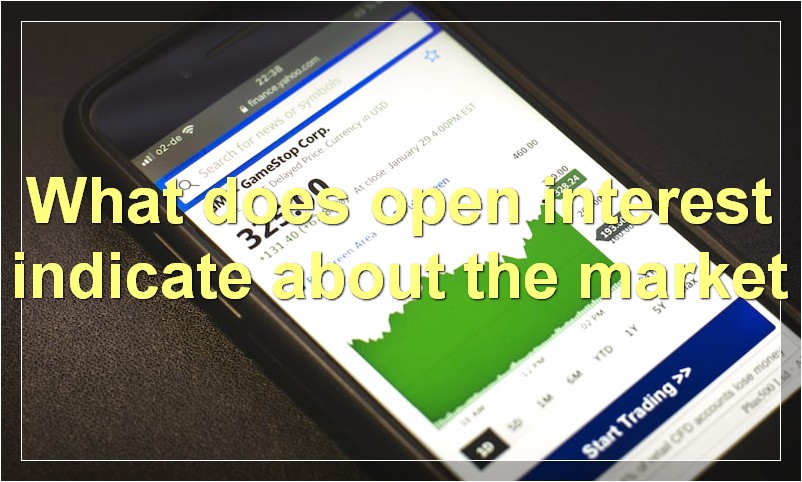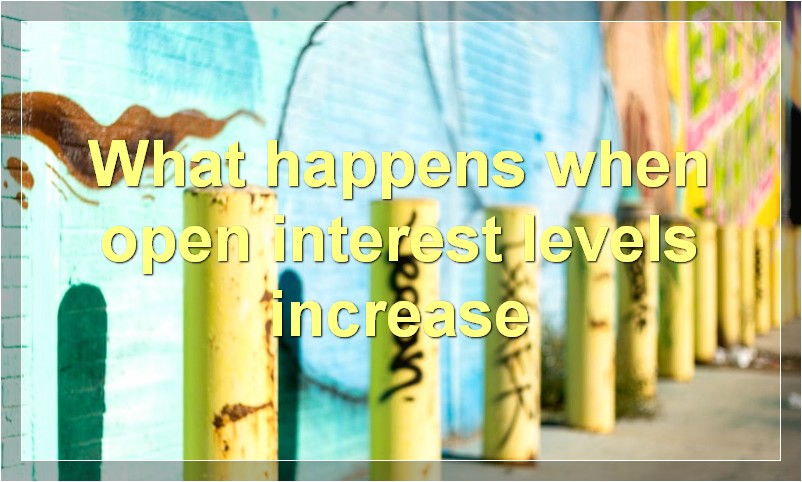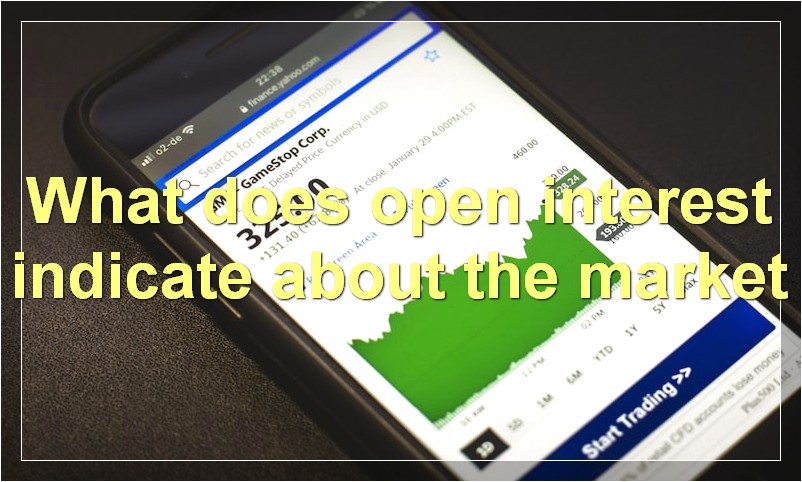If you’re interested in options trading, it’s important to understand the basics of open interest. Open interest is a measure of the number of outstanding contracts in a particular market. It can be used to gauge market activity and liquidity, and it can also give you some insight into the future direction of the market.
What is open interest in options trading
Open interest is the number of outstanding contracts on a security. It is used as a measure of market activity and liquidity in the options market.
When open interest increases, it means that more contracts are being traded and there is more liquidity in the market. This is generally seen as a positive sign for the underlying security.
Conversely, when open interest decreases, it means that fewer contracts are being traded and there is less liquidity in the market. This is generally seen as a negative sign for the underlying security.
Open interest can be used to gauge the sentiment of traders in the market. If open interest is increasing while prices are falling, it could be a sign that traders expect prices to continue falling. On the other hand, if open interest is increasing while prices are rising, it could be a sign that traders expect prices to continue rising.
Open interest can also be used to identify potential support and resistance levels in the market. If there is a large amount of open interest at a certain price level, it could act as a support level if prices fall to that level. Similarly, if there is a large amount of open interest at a certain price level, it could act as a resistance level if prices rise to that level.
Overall, open interest is a useful tool for gauging market activity and sentiment. It can also be used to identify potential support and resistance levels in the market.
What does open interest indicate about the market

Open interest is the number of outstanding contracts in a given market. It represents the number of buyers and sellers in that market. When open interest is high, it indicates that there is a lot of activity in the market. This can be good or bad depending on the market conditions. If the market is trending upwards, high open interest indicates that there are a lot of people buying into the trend. This can be seen as a positive sign that the trend will continue. However, if the market is trending downwards, high open interest can indicate that there are a lot of people selling and trying to get out of the market. This can be seen as a negative sign that the trend will continue.
How is open interest used in options trading
Open interest is the total number of outstanding contracts that have been traded but not yet liquidated by an opposite transaction or offsetting order. Open interest can be found in the options market, where it refers to the number of open contracts for a particular options series. It is also a good way to gauge market activity for a particular security.
In options trading, open interest is used to confirm trends and reversals. An increase in open interest indicates that more traders are entering the market and buying the contract. This is usually seen as a bullish sign, as it means that more traders believe the price of the underlying asset will rise. A decrease in open interest usually indicates that traders are losing faith in the current trend and expect the price to fall.
How does open interest affect options prices
Open interest refers to the number of outstanding contracts that are held by traders at the end of the day. The higher the open interest, the more liquid the market is said to be. When open interest increases, it usually indicates that new money is coming into the market, which can affect prices.
What factors influence open interest levels
Open interest levels are determined by a number of factors, including the level of trading activity in a particular market, the amount of outstanding contracts and the direction of the market trend.
What happens when open interest levels increase

When open interest levels increase, it means that more people are trading the security. This is generally seen as a good thing, as it indicates that there is more interest in the security. However, it can also lead to increased volatility, as more people are trying to buy or sell the security at the same time.
What happens when open interest levels decrease
When open interest levels decrease, it typically means that the market is losing steam. This can be due to a number of factors, but it typically means that traders are becoming less interested in the market and are starting to close out their positions. This can lead to a decrease in liquidity and a decrease in trading activity.
Is high open interest always a good thing
Open interest is the number of outstanding contracts that are held by traders at the end of the day. It is a good indicator of market activity and liquidity. A high open interest means that there are more traders interested in the market, and that there is more liquidity. This can be a good thing, as it means that the market is more active and that there are more opportunities for trades. However, a high open interest can also be a bad thing, as it can mean that the market is too volatile and that there are too many traders competing for the same contracts.
Is low open interest always a bad thing
No, low open interest is not always a bad thing. In fact, there are times when low open interest can be a good thing. For example, if you are looking to enter a trade and the market is not very active, low open interest can be your friend. Low open interest can also be a good thing if you are looking to exit a trade and the market is not very active.
How can traders use open interest data to their advantage
Open interest is the number of contracts in a given futures market that have not yet been offset by an opposite transaction. It is a measure of market activity and liquidity, and can be used by traders to gauge the strength of a particular market trend. Open interest data can also be used to identify potential support and resistance levels for a given market.

